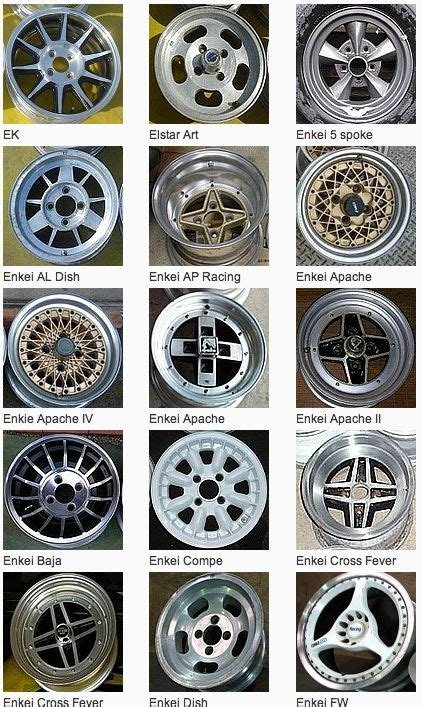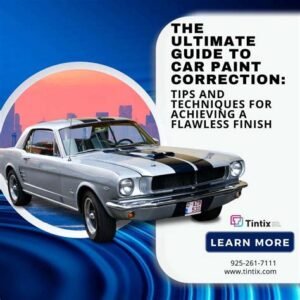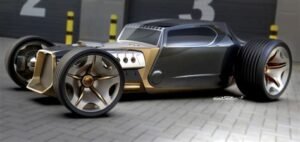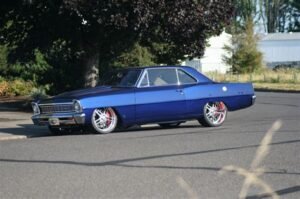
The perfect set of custom wheels can turn an ordinary classic car into a truly magnificent one. It is more than just aesthetics; choosing the right wheels can definitely enhance performance, handling, and the overall driving experience. With so many options available, it’s easy to feel overwhelmed. This guide will break down key factors to consider when you’re choosing custom wheels for your classic car and help you find the perfect fit for style and function.
Understanding the Basics: Sizes and Offsets of Wheels
Before you get all dreamy with chrome and complicated designs, let’s first learn the basics behind wheel sizing. Wheels basically come in sizes that vary between 14 to 22 inches, measured in inches. The diameter refers to the size of the overall wheel; it makes a great deal of difference in the way your car looks and sits. Offset is another critical factor, which refers to the distance between the wheel mounting surface and its center line.
Wheel Diameter
The most obvious aspect to take into consideration is the diameter of the wheel. A larger diameter wheel generally gives the car a more aggressive and modern look. However, increasing the diameter can also affect ride quality and handling, making it more likely to rub against the fender wells.
Choosing the Right Diameter
Use your classic car’s original wheel size as your guide.
Do your research to figure out what size will work on your vehicle if you wish, and find the recommended overall diameter range for your model to make sure it will work without presenting any problems with brakes, suspension, or tire clearance.
Personal preference is another important factor in case you have in mind some sort of ideal with regard to the appearance of your car.
Wheel Offset
Offset is essentially the distance between the hub of the wheel and the centerline, which dictates how inset or outset the wheel will sit in the wheel well. A positive offset is going to have the wheel mounted further inward, while a negative offset will push it further outward. Finding the correct offset is important for proper alignment, tire clearance, and handling.
Understanding Offset Terminology
Positive offset means the mounting surface is closer to the center line of the vehicle. This allows for a wider stance and better tire clearance, but it will often compromise steering and handling.
Negative offset means the mounting surface is away from the centre line, which provides wider stance to the car and gives a more aggressive appearance. However, it may increase the chances of tyre rubbing and will affect stability.
Material of Wheel: Weighing the Pros and Cons
The materials used in custom wheels greatly vary from characteristic to pricing. This is a great factor because it can make the wheel vary in weight, strength, and durability. Let me break down the most common materials used when custom ordering wheels:
Steel Wheels
Steel wheels are one of the cheapest alternatives and are known for their resilience and strength. They are the original equipment in large numbers of classic cars. However, they are heavier among other materials, which can be a basis to affect their performance as well as fuel economy.
Advantages of Steel Wheels
- Inexpensive
- Strong and durable
- Easy to repair or replace
Disadvantages of Steel Wheels
- Heavy
- Less attractive as another type of material
- They tend to rust
Aluminum Wheels
The aluminum wheels are made up of light weight construction, hence making them handle well and therefore give good fuel economy. They also have a more extensive range of styles and finishes as compared to steel wheels.
Aluminum Wheel Advantages
- Light Weight
- Handling and performance have been improved
- Various range of designs and finishes
Disadvantages of Aluminium Wheels
- More expensive than steel
- Subject to greater curb or pothole damage
- Repairs more difficult
Magnesium Wheels
Magnesium wheels are the lightest of all, providing quite noticeable weight savings and rather good performance. However, they are also the most expensive and prone to damage, which makes them less common for everyday use.
Advantages of Magnesium Wheels
- Very lightweight
- Maximum performance benefits
Disadvantages of Magnesium Wheels
- Highly expensive
- Fragile and prone to damage
- Difficult to repair
Choosing the Right Wheel Style
This is entirely an issue of personal preference. Classic cars can pull off anything from the most classic wire wheels to cutting-edge multi-spoke designs.
Classic Wire Wheels
Wire wheels are highly nostalgic and sophisticated, with their near-exclusive use with classic cars and in vintage racing. They could be spoked wheels, split-spoke wheels, and mesh wheels.
Pros of Wire Wheels
- Classic look, almost timeless
- Lighter in weight
Cons of Wire Wheels
- Higher maintenance
- Much more expensive than other types
Modern Multi-Spoke Wheels
Smaller spokes within the design give a very sleek, modern appearance, while detailed designs will have a number of finish types. They come in many sizes and offsets and fit perfectly with various classic car styles.
Advantages of Multi-Spoke Wheels
- Sleek, sporty look
- Highly custom styling with many finish options
Disadvantages of Multi-Spoke Wheels
- More costly than some other wheel options
Custom Wheel Designs
Those who want really unique wheels can opt for custom wheels, which open the floodgate of possibility. You can consult a professional wheel designer that crafts wheels that perfectly capture the style and character of your car.
Custom Wheel Designs: Pros and Cons
- Pros
- Unique and personalized
- Wide customization options
- Cons
- More expensive
- Longer lead times
Wheel Finish: Protection with Aesthetics
The finish on your wheels can not only add to their appearance but also their durability. Whether you’re going for polished chrome or powder coating, there’s a finish that suits just about every style and budget.
Chrome
Chrome plating gives a classic look, epitomizing elegance while reflecting light onto the wheel for that dazzling shine. However, it may eventually be prone to scratches and pitting and does need regular maintenance.
Polished Aluminum
Polished aluminum offers a brilliant, shiny appearance at less expense than chrome. It’s also less resistant to scratches and corrosion, requiring more frequent washing.
Powder Coating
Powder coating uses an extremely durable, scratch-resistant finish in a variety of colors. It’s a great option for wheels to help protect the elements off and the finish longer.
Painted Wheels
The least expensive alternative is to paint the wheels themselves, which are available in a wide range of colors and finishes. A painted finish might be less durable compared with powder coating or chrome plating and may need to be repainted over time.
Conclusion
The bottom line is that with a classic car, choosing the right custom wheels is all about finding the right mix of style and functionality. Consider the size, offset, material, style, and finish of the wheel. By studying and understanding these aspects, you will definitely end up with wheels that enhance the performance and handling capabilities of your automobile while improving its looks-and this will surely keep you going in style for years to come.




